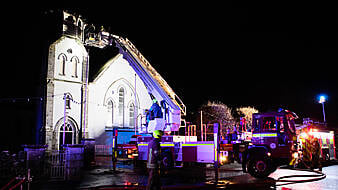A bus driver whose careless driving caused the death of a cyclist has appealed his conviction, saying the trial judge did not explain legal terms to the jury in a way they could understand.
Osborn Irabor (60) of French Park, Tyrrelstown, Dublin was found guilty at the Circuit Criminal Court in 2018 of careless driving causing the death of Mary White (55) on November 17th, 2014.
At the three-judge Court of Appeal today, Patrick Gageby SC for Irabor said that after the jury was sent out to begin their deliberations they returned and asked the judge to "elaborate in layman's terms" some legal principles in the case.
Mr Gageby said Judge Francis Comerford then re-charged the jury using legal rather than layman's terms, such as "appreciable", "due care and attention", "prudent" and "adverting". He said: "The amount of legal language which surrounded this was, it would appear, causing the jury some difficulties."
Mr Gageby also asked the court to consider what his client did that demonstrated that he fell below the standard of care and attention that would be expected of a reasonably competent driver. There was, he said, no suggestion that he was using a phone or talking to someone or doing anything else that might have distracted him from driving.
Mr Justice John Edwards, presiding, with Ms Justice Isobel Kennedy and Ms Justice Aileen Donnelly, reserved judgement.
Traumatic head injuries
At Irabor's sentence hearing in November 2018 Judge Comerford heard that at around 9.40pm on November 17th, 2014 the bus driven by Irabor struck Ms White. Ms White was knocked off her bike and sustained traumatic head injuries.
She was rushed to hospital where she was pronounced dead two days later.
In a victim impact statement the victim's elderly mother, Peg White, said her daughter had spent 35 years cycling around Dublin and was meticulous on the roads. Ms White, from Co Meath, said suggestions during the trial that her daughter was at fault were hard on the family, though she accepted defence lawyers were doing their job.
The near head-on collision happened at a T-junction on Burlington Road in the south of the city as the bus was turning right into the road Ms White was cycling on.
Ms White, who was cycling towards the junction, had front and back lights on and was wearing a “hi-viz” jacket. Judge Comerford said she was a fully responsible road user.
He said that one of two aggravating factors in the case was the fact that Irabor was a professional driver. The other was the “vulnerability” of cyclists, he said, noting what he said is a mismatch between the size and security of a bus and the vulnerability of a pedal cyclist.
Evidence in trial
Judge Comerford said that he had no doubt that Irabor did not see the bicycle, and he believed the likely reason for this was a blind spot created by the driver's wing mirror.
He said if the bus had stopped at the junction the bicycle would not have been in the blind spot. “The bicycle was in the blind spot because the bus was cutting the corner,” he said.
“The failure to see her resulted from that breach in standard of driving, (something) a reasonable and prudent driver wouldn’t undertake,” he said. A professional driver should have been aware of the blind spot, he added.

He said he had no doubt that Irabor believed the road he was turning into was clear but that this view did not take into account visibility on the night, the potential presence of cyclists and the blind spot.
He said that in road traffic cases the greater the risk posed by an action, the more likely the harm and the greater the moral responsibility.
Judge Comerford said a mandatory driving ban of four years followed from the conviction and that this would most likely result in the loss of Irabor's employment.
He said this was sufficient punishment but added that “there is no comparison between the loss of Mary White and her family and the burden the ban places on Irabor”.







